Beef Ramen Noodles Perfected: Easy, Flavorful, and Satisfying
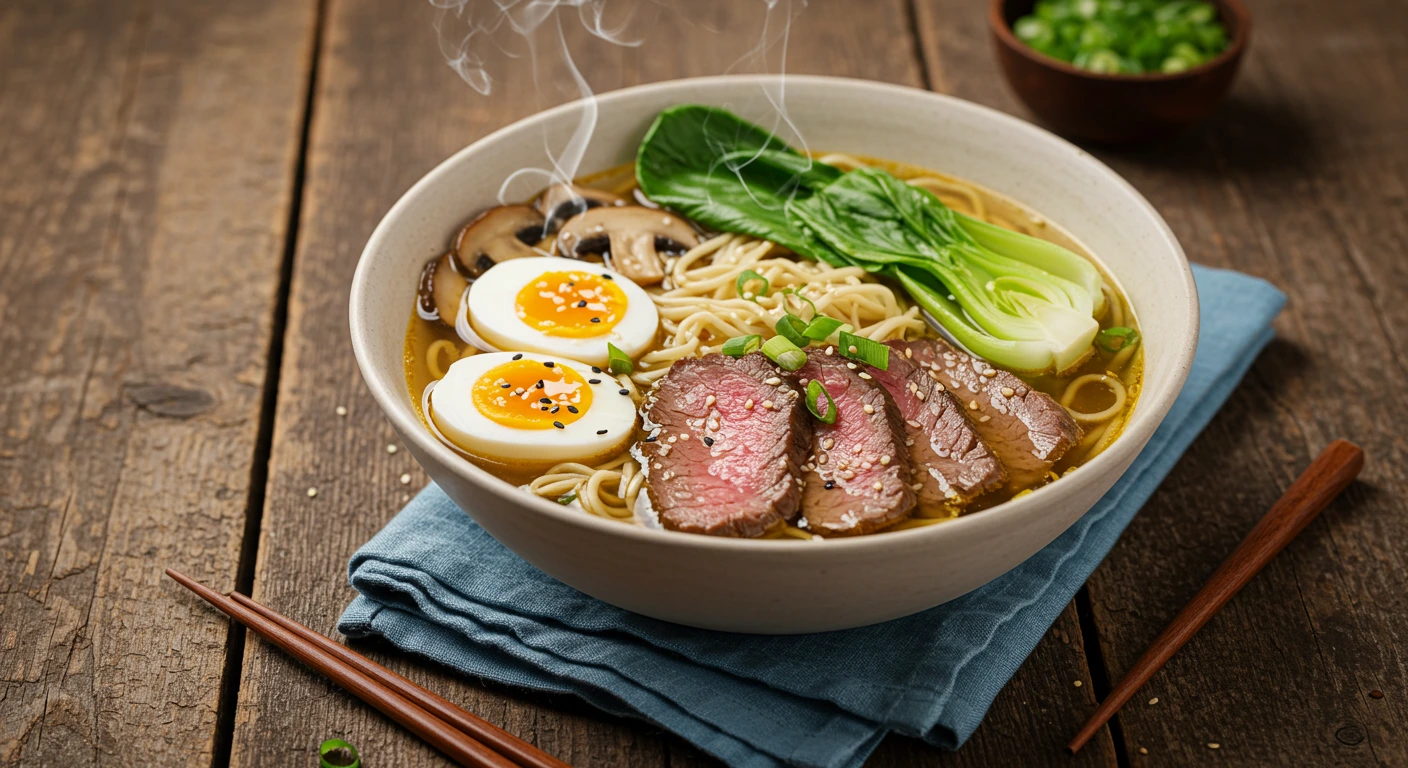
Table of Contents
Introduction — why this beef ramen noodles recipe matters
There’s something almost unfair about ramen: a humble packet of noodles that can be transformed into a bowl so comforting it feels like a warm hug on a cold night. Now imagine that hug upgraded—meaty, layered, and vibrantly flavored. That’s what beef ramen noodles can be when you treat them with a little care. Whether you’re hunting for fast weeknight comfort or a way to use leftover roast beef, this recipe family—ranging from quick ramen noodles with ground beef to an indulgent bowl with sliced steak—shows how flexible and satisfying ramen can be.
This article isn’t a dry list of steps. I’ll walk you through why beef ramen works, the exact ingredients that matter, the tools that make the job easier, and a step-by-step process that keeps the noodles springy and the broth packed with depth. I’ll also weave in variations—like ground beef and ramen noodles stir-fry ideas and a spicy broth version—so you can choose your level of effort and flavor. Ready? Let’s make ramen that feels like a recipe you actually want to return to.
Why you’ll love beef ramen noodles
A comfort bowl that’s also practical
Isn’t it great when comfort food doesn’t ask for much in return? Beef ramen noodles deliver big flavor from modest ingredients. It’s the kind of dinner that feeds appetites and soothes the soul without requiring a day in the kitchen.
Time-saving without sacrificing depth
Busy evening? Tossing in a few smart ingredients—beef broth, soy sauce, garlic, and a splash of sesame oil—creates depth quickly. Want more texture? Use ramen noodles with ground beef for a faster, skillet-friendly version.
Customizable for any cook or palate
Think of this dish like a blank canvas: swap vegetables, dial the spice up or down, use ground beef for a budget-friendly route, or sliced steak for something more elevated. The base remains the same—comforting, savory, and satisfying.
Economical and flexible
From pantry-ready instant ramen plus a pound of ground beef to a composed bowl with braised beef, this category of recipes stretches a food budget while delivering restaurant-level satisfaction.
Essential ingredients for beef ramen noodle recipes
Below is a clear ingredients table so you can shop or check your pantry in one glance. I’ll follow the table with notes about substitutions and why each component matters.
| Ingredient | Amount (for 2–3 servings) | Notes / Substitutions |
|---|---|---|
| Ramen noodles (fresh or instant) | 2 bundles or 200 g | Fresh for texture; instant is fine—discard seasoning packet and use your own broth |
| Beef (ground, sliced, or shredded) | 300–400 g | Ground beef for fast skillet ramen; flank or sirloin for slices; leftover roast works great |
| Beef broth (low-sodium) | 4 cups (1 L) | Use homemade for best depth; bouillon + water is OK in a pinch |
| Soy sauce | 2–3 tbsp | Tamari works for gluten-free |
| Garlic | 3 cloves, minced | Fresh beats powdered every time |
| Fresh ginger | 1–2 tbsp, grated | Optional but highly recommended |
| Sesame oil | 1 tsp | Adds nutty aroma—use sparingly |
| Mirin or rice vinegar | 1 tbsp | Mirin adds sweetness; vinegar adds brightness |
| Green onions | 3–4 stalks, sliced | Garnish and freshness |
| Vegetables (bok choy, mushrooms, carrots) | 1–2 cups total | Use what you like; spinach, napa, or peas work |
| Chili flakes or paste | To taste | Sriracha, gochujang, or chili oil are good options |
| Egg (optional) | 1–2 | Soft-boiled or poached for richness |
Why these ingredients?
- Ramen noodles: Fresh noodles have the best chew; instant works and is more forgiving for fast meals. The noodle’s texture is the backbone—overcooked noodles kill the bowl.
- Beef: Ground beef is versatile and fast—perfect for ramen noodles with ground beef stir-fries or quick soups. Sliced beef, when seared and rested, gives an almost steakhouse vibe to your ramen.
- Broth & flavor boosters: A good broth doesn’t need to be complicated, but it needs layers: salty (soy), umami (beef broth), aromatic (garlic/ginger), and a touch of sweetness or acidity (mirin or rice vinegar). These layers are what separate a forgettable noodle bowl from a memorable one.
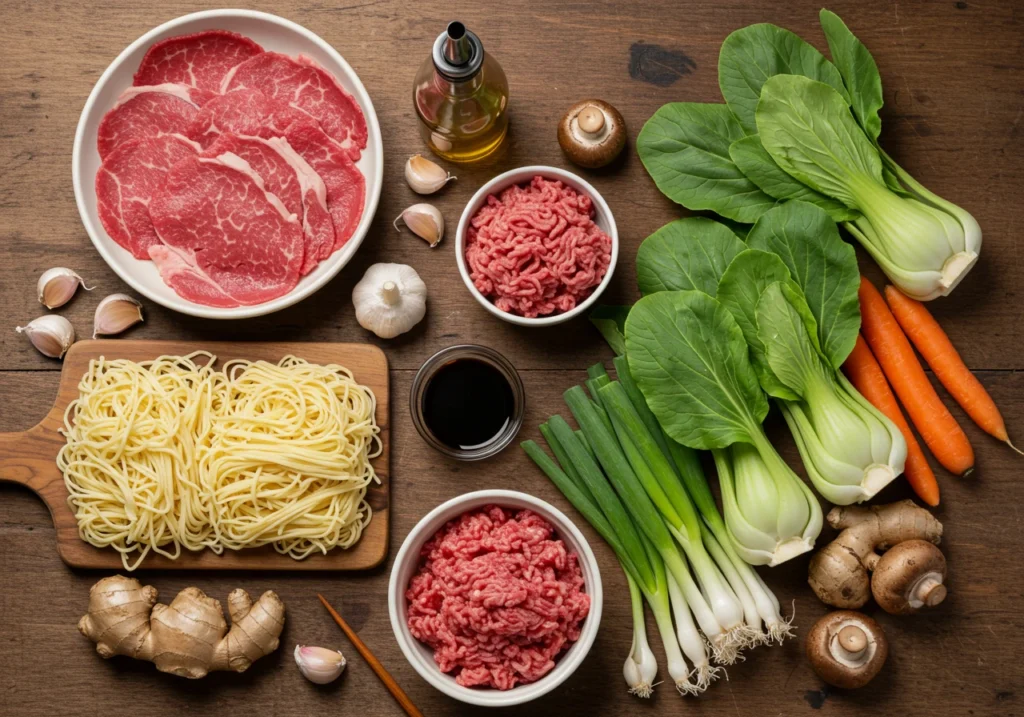
Kitchen tools you’ll need
| Tool | Why it helps |
|---|---|
| Large stock pot or Dutch oven | For building the broth and simmering aromatics |
| Heavy skillet | For browning ground beef or searing sliced beef |
| Fine-mesh strainer or spider | For removing ingredients and retrieving noodles |
| Sharp knife and cutting board | Prep is faster and safer with the right tools |
| Ladle | For portioning broth into bowls |
| Small bowl and chopsticks | For mixing sauces or soft-boiling eggs |
How the tools influence the result
A heavy skillet gives you a proper sear on sliced beef—crucial for flavor. A stock pot gives the broth room to develop without evaporating too quickly. You don’t need a long list of fancy gadgets; the right basic tools and one good pan will take you far.
How to make beef ramen noodles — step-by-step
Below I break the process into four main stages: preparing the beef, cooking the noodles, building a flavorful broth, and finishing & garnishing. Each stage carries a couple of small techniques that make a big difference.
Prepare the beef (ground beef and ramen noodles options)
If you’re using ground beef, season it early with a pinch of salt and a dash of soy sauce so it marinates while you prep the rest. Heat your skillet until it’s hot, add a splash of neutral oil, then brown the beef in batches—crowding the pan will steam the meat instead of browning it. Crisped edges add texture and deep flavor.
If you prefer sliced beef: slice thinly against the grain (this keeps it tender), season lightly, and sear in a screaming-hot pan for 30–60 seconds per side. Remove and rest briefly before slicing thinner if needed. Searing develops the Maillard flavors that make the broth taste richer, even if you add the beef back in later.
Cook the noodles just right
Noodles are delicate: overcook and they’re mushy, undercook and they’re chalky. Follow package time as a baseline, but test a strand a minute early. For fresh noodles, a quick 1–2 minute dunk in boiling water is often enough. If you’re making a stir-fry style dish with ground beef and ramen noodles, par-boil the noodles for about 60–70% of the recommended time, then finish them in the skillet with sauce so they soak up flavor without turning to porridge.
Tip: rinse fresh noodles in cold water after draining for stir-fry versions to stop cooking. For soups, don’t rinse—you want that surface starch to help broth cling to the noodles.
Build a rich, savory broth
Start with a good base: 4 cups of beef broth. Warm it gently while you sweat aromatics—minced garlic and grated ginger—in a little oil until fragrant, about 30 seconds. Add soy sauce, a teaspoon of sesame oil, and a tablespoon of mirin or a splash of rice vinegar to create balance.
If you’ve seared beef in the skillet, deglaze with a little broth or water and pour those browned bits into your stock pot—that’s flavor gold. Simmer gently for 10–15 minutes to allow the flavors to meld. For a richer bowl, stir in a tablespoon of miso paste dissolved in a bit of warm broth at the end.
Combine and garnish with fresh toppings
Assemble: place your cooked noodles into warmed bowls, ladle over the hot broth, then arrange beef on top. Add vegetables—quick-blanched bok choy, sautéed mushrooms, or raw shredded carrots. Top with sliced scallions, a soft-boiled egg, and a dusting of sesame seeds or chili flakes.
Want texture contrast? Add a small handful of crispy shallots or pan-fried garlic chips. Want heat? A swirl of chili oil or a teaspoon of gochujang will amplify the bowl without drowning the other flavors.
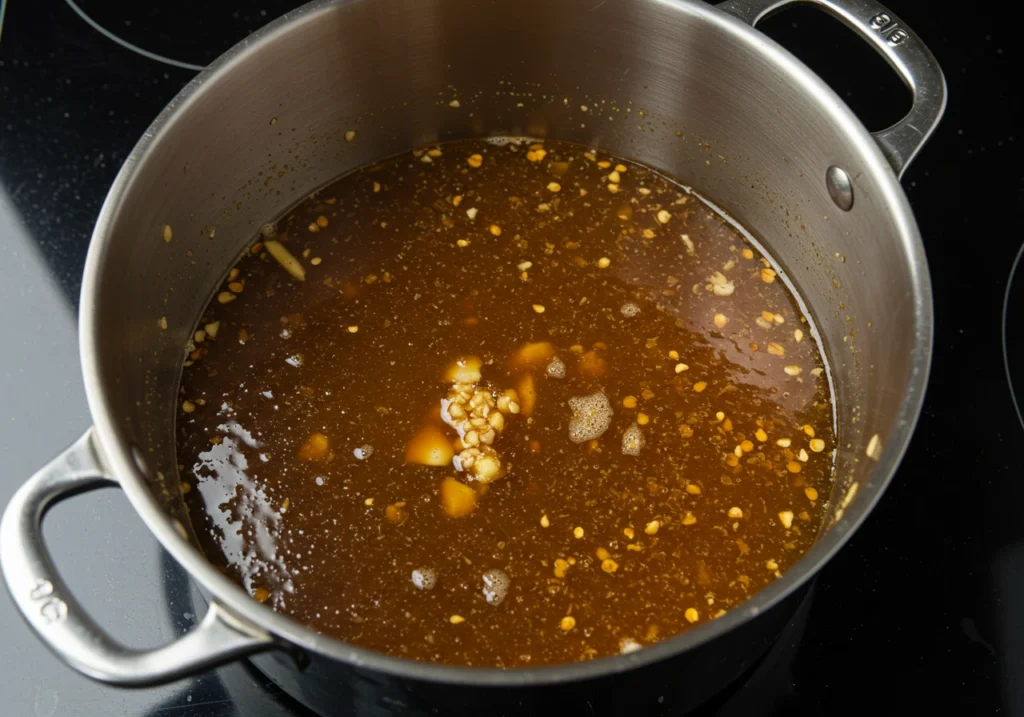
Practical tips while cooking
- Season in layers. A little salt at each stage—beef, broth, finishing sauce—prevents a flat final bowl.
- Taste as you go. Broth often needs adjustment. Add acid (vinegar) to brighten or a pinch of sugar to tame over-assertive saltiness.
- Noodle timing. Start cooking noodles only when the broth is almost ready so everything is hot at assembly.
- Leftovers strategy. Keep broth separate from noodles during storage to preserve noodle texture.
Delicious Variations of Ramen Noodles with Beef
The best part about ramen is how adaptable it is. Once you have the foundation, you can spin off endless variations depending on mood, pantry, or dietary needs. Here are some of the most satisfying ways to experiment with beef ramen noodle recipes.
Spicy Beef Ramen Noodle Recipes with Chili Heat
If you crave bold flavors, spice is your friend. A spoonful of chili paste, a swirl of chili oil, or a pinch of red pepper flakes can transform a mild beef broth into something fiery and invigorating. For a deeper, earthy spice, try gochujang (Korean chili paste), which adds both heat and subtle sweetness.
Tip: Don’t just drop chili into the broth—mix it into the oil when you sauté garlic and ginger. This technique blooms the chili flavor, creating a spiced oil base that perfumes the entire bowl.
Ground Beef and Ramen Noodles Stir-Fry
Not every ramen dish has to be soupy. In fact, stir-fry style ramen is one of the fastest weeknight meals you can make. Here’s how:
- Parboil the noodles until slightly underdone.
- Brown ground beef in a skillet with garlic and onions.
- Toss in vegetables like shredded cabbage, bell peppers, or snap peas.
- Add the noodles back into the skillet with soy sauce, a splash of beef broth, and sesame oil.
The result? A sticky, glossy noodle stir-fry that clings to every strand and delivers savory bites of beef throughout.
Ramen Noodles with Beef and Vegetables
Want to load up on nutrition? Pair your ramen noodles with beef with as many vegetables as you can fit in the pot. Bok choy and napa cabbage wilt beautifully, mushrooms add umami, and carrots bring sweetness. Don’t shy away from frozen veggies either—peas or mixed vegetable blends can work wonders on busy nights.
Think of the broth as a stage and vegetables as the supporting cast. Each veggie adds a different layer of flavor and texture.
Creamy Beef Ramen Noodle Soup
When you need something indulgent, creamy ramen hits the spot. You can achieve creaminess by stirring in coconut milk for a subtle sweetness, or whisking a spoonful of tahini or peanut butter into the broth for nutty richness. Pair this with sliced beef and mushrooms for a ramen bowl that feels luxurious without being fussy.
Extra Tips for Perfect Ramen Noodles with Ground Beef
Even the best recipe can stumble without a few kitchen smarts. Here’s how to elevate your ramen game:
Use beef broth instead of water
It sounds obvious, but it’s worth repeating: water is bland. A carton of beef broth or even a bouillon cube dissolved in hot water instantly boosts flavor and makes ground beef and ramen noodles taste like they simmered all day.
Add eggs for extra protein and creaminess
An egg is ramen’s best friend. Soft-boiled eggs add a custardy richness, scrambled eggs folded into stir-fried noodles add bulk, and a whisked egg dropped into hot broth creates silky ribbons. Each version upgrades your bowl with almost no effort.
Balance salty, sweet, and spicy
Ramen broth can easily tip too salty if soy sauce is used heavily. Balance is key: add a pinch of sugar or honey to round out flavors, and a splash of vinegar to brighten the bowl. This makes the broth taste complex instead of overwhelming.
Garnish like it matters
Don’t underestimate toppings. Scallions, sesame seeds, cilantro, and chili oil aren’t just decorative—they add texture, aroma, and a last-minute punch of flavor that makes the dish feel finished.
Serving Suggestions for Beef Ramen Noodles
A good ramen bowl can be a complete meal, but thoughtful pairings make the experience even better.
Pair with Asian-inspired side dishes
Spring rolls, dumplings, or gyoza are natural partners. A crisp vegetable spring roll adds crunch, while steamed dumplings echo the flavors of the broth.
Serve as a main or hearty side
A large bowl of beef ramen noodles is satisfying enough for dinner, but you can also serve smaller portions as part of a larger Asian-inspired spread with fried rice, stir-fried greens, or teriyaki chicken.
Garnish ideas to elevate presentation
Think restaurant-style: a half soft-boiled egg, sliced scallions, toasted sesame seeds, or a drizzle of chili oil. These small touches turn an ordinary noodle bowl into something you want to photograph before eating.
Beverage pairings
Skip soda and pair with unsweetened iced tea, jasmine tea, or a light fruit punch. These drinks cleanse the palate and let the ramen flavors shine.
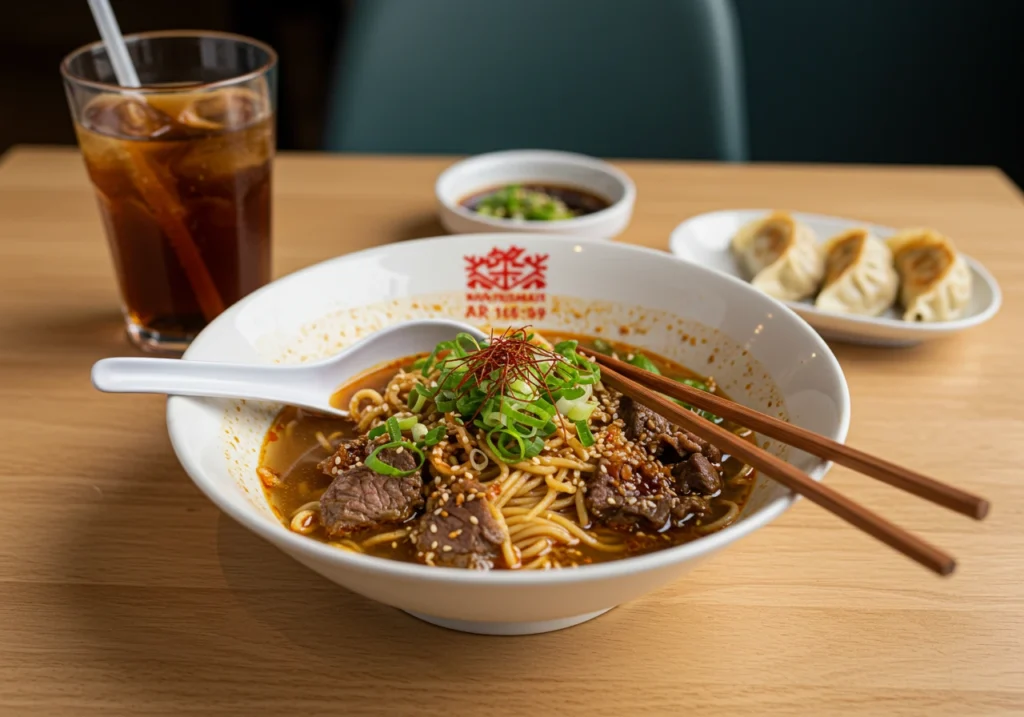
Storage and Reheating Tips
Noodles can be tricky when it comes to leftovers, but with a little strategy, you can enjoy beef ramen noodle recipes for lunch the next day without a soggy mess.
Storing ramen noodles with beef
Keep noodles and broth separate if possible. Store cooked noodles in a lightly oiled container, and keep broth and beef in an airtight jar. Refrigerate both for up to 3 days.
Best way to reheat
Warm the broth on the stove until steaming, then add noodles just before serving. This keeps them from breaking down. Microwave reheating works but tends to soften noodles too much.
Freezer tips for ground beef and ramen noodles
Cooked noodles don’t freeze well, but the broth and beef do. Freeze in labeled containers for up to 2 months, then cook fresh noodles when reheating for a just-made feel.
Shelf life of leftovers
In the fridge, leftovers should be eaten within 2–3 days. The broth often tastes even better the next day as flavors continue to develop.
Common FAQs About Beef Ramen Noodle Recipes
Can I make beef ramen noodles with ground beef instead of steak?
Absolutely. In fact, ramen noodles with ground beef are one of the quickest versions of this dish. Brown the meat well, season with soy sauce and garlic, and you’ve got a rich, savory base that pairs beautifully with noodles.
What veggies go best with ramen noodles and beef?
Bok choy, spinach, carrots, mushrooms, napa cabbage, and bean sprouts all work well. The key is mixing textures—something leafy, something crunchy, and something earthy.
How do I make beef ramen noodle soup spicy?
Bloom chili flakes or paste in oil with garlic and ginger before adding broth. This method infuses the entire soup with spice instead of just floating heat on top.
Can I prepare beef ramen noodles ahead of time?
Yes, with one caveat: keep noodles and broth separate until you’re ready to eat. This prevents soggy noodles and ensures a fresher texture.
Conclusion — Bringing It All Together
At the end of the day, beef ramen noodles are more than just a quick meal. They’re a bridge between budget-friendly convenience and flavorful, soul-satisfying comfort. From the simplicity of ground beef and ramen noodles stir-fry to the depth of a slow-simmered beef broth, these bowls offer something for everyone.
The beauty lies in flexibility—you can spice it up, load it with veggies, or keep it minimal for a late-night craving. With the tips, variations, and storage tricks we’ve covered, you now have the know-how to make your own bowl of ramen not only tasty but unforgettable.
So, what’s stopping you? Grab those noodles, pick your favorite beef, and start cooking. Once you’ve tried these beef ramen noodle recipes, you’ll never look at a simple packet of ramen the same way again.
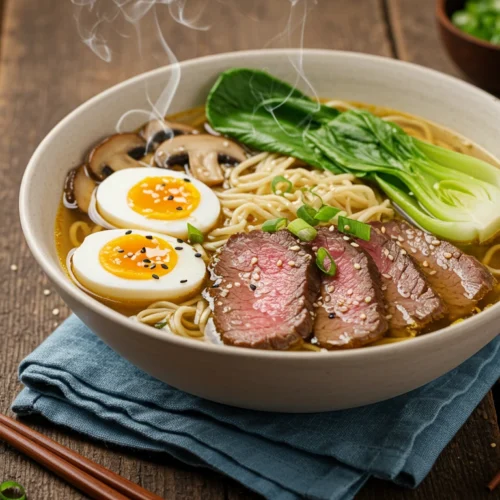
Beef Ramen Noodles Perfected: Easy, Flavorful, and Satisfying
Ingredients
- 2 bundles ramen noodles 200 g – fresh or instant, discard seasoning if using instant
- 300 –400 g beef – ground beef sliced flank steak, or leftover roast beef
- 4 cups beef broth 1 L – low-sodium preferred
- 2 –3 tbsp soy sauce – or tamari for gluten-free
- 3 cloves garlic minced
- 1 –2 tbsp fresh ginger grated
- 1 tsp sesame oil – for nutty aroma
- 1 tbsp mirin or rice vinegar – adds balance
- 1 –2 cups vegetables – bok choy mushrooms, carrots, spinach
- 3 –4 green onions sliced – for garnish
- Chili flakes or chili paste – optional to taste
- 1 –2 eggs optional – soft-boiled, poached, or scrambled
- 1 tsp neutral oil – for cooking beef
Instructions
Prepare the beef
- For ground beef: Heat oil in a skillet, brown beef until crispy edges form, season with soy sauce.
- For sliced beef: Season lightly, sear quickly (30–60 seconds per side), then set aside.
Cook the noodles
- Boil noodles according to package, but slightly undercook to keep them springy.
- Drain; rinse with cold water if stir-frying, or leave as is for soup.
Build the broth
- In a stock pot, sauté garlic and ginger until fragrant.
- Add beef broth, soy sauce, sesame oil, and mirin/rice vinegar.
- Simmer for 10–15 minutes, adjusting flavor with chili, sugar, or extra soy if needed.
Combine
- Place noodles in bowls, ladle broth over, and top with beef.
- Add vegetables (blanched or sautéed) and garnish with scallions.
- Optional: top with soft-boiled egg and sesame seeds.
Serve immediately
- Enjoy hot, with extra chili oil or a splash of vinegar for brightness.
Notes
- Spicy version: Add gochujang or chili paste to the garlic/ginger base.
- Stir-fry version: Cook noodles 70% through, then finish in a skillet with browned ground beef, soy sauce, and vegetables.
- Creamy version: Stir in coconut milk or a spoon of peanut butter/tahini for richness.
- Vegetable add-ins: Bok choy, napa cabbage, carrots, mushrooms, spinach, snap peas.
- Storage: Store noodles and broth separately. Refrigerate up to 3 days. Broth + beef can be frozen for 2 months; cook fresh noodles when reheating.
Review Our Recipe: Your Feedback Makes a Difference
There are no reviews yet. Be the first one to write one.
